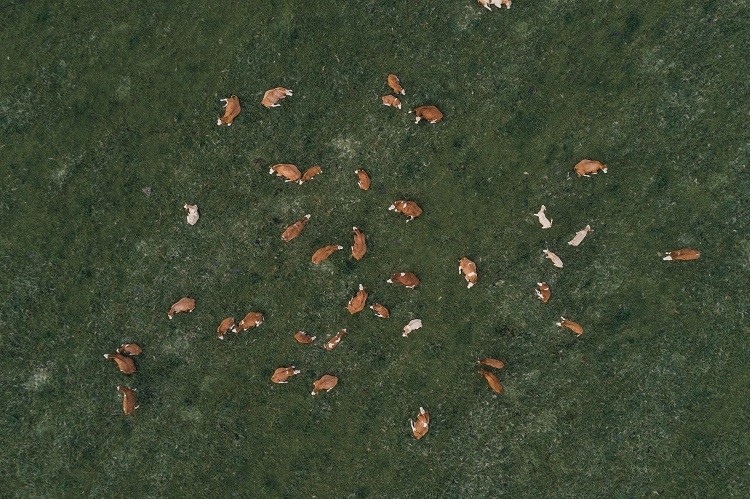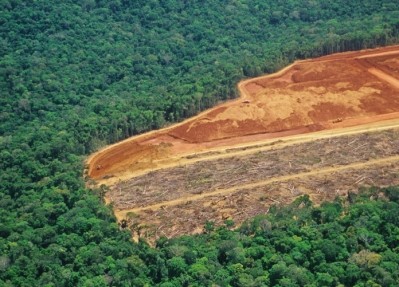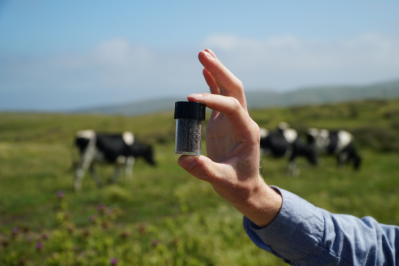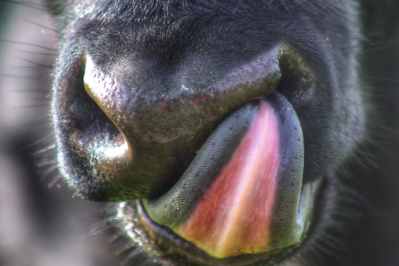More action from meat and dairy needed to deliver methane pledge, finds report: ‘Agriculture is the Achilles heel of Europe’s methane strategy’

Domestic anthropogenic sources of methane emissions in the European Union amount to 15.2 megatons per year. It has been ‘conservatively’ estimated that this is roughly the equivalent to total emissions from 100 coal-fired power plants.
Twenty-seven percent of these methane emissions are attributed to the waste sector, 13% from the energy sector, and a significant 53% - according to 2019 data – comes from the agricultural sector.
Globally, the EU is responsible for 5% of total methane emissions. While this may not sound like much, in order to achieve its Climate Target Plan – of reducing all greenhouse gases (GHGs) to 55% by 2030 – the EU must tackle methane emissions in its agriculture sector.
At the same time, having signed the Global Methane Pledge – a commitment launched by the US and EU in 2020 – the EU is committed to take voluntary actions that will help global methane emissions reduce by at least 30% by 2030.
It is thought that achieving the Global Methane Pledge could eliminate 0.2˚C warming by 2050.
Is the EU on track to achieve this goal? According to a report released today (14 June), it is ‘unlikely’ the EU can deliver on this pledge without taking greater action within its meat and dairy industry: notably, by reducing livestock numbers.
Business-as-usual ‘unlikely’ to succeed
The ‘High Steaks’ report – conducted by CE Delft on behalf of Changing Markets Foundation – raises concerns that in a business-as-usual scenario, the EU will fail to achieve a 30% reduction by 2030.
Indeed, CE Delft found that under such a scenario, emissions from livestock are set to fall by just 3.7% by that time. Technical measures could help increase reduction a small amount: feed additives, for example, could cut emissions by 1-12% and manure management by between 4-7%.
Current EU plans in the waste sector could reduce emissions by 33% by 2030.
However, the report authors argue greater reductions could be made with additional measures. In the waste sector, for example, eliminating food loss and waste could cut emissions by 20-24% by 2030, and separating and reusing organic waste could cut emissions by 21-31%.
In energy, setting methane emissions standards for oil and gas producers working both within and outside of Europe could cut emissions on fossil fuel imports by between 48-87%.
However, by far, the greatest reductions in methane emissions could be made through measures that encourage Europeans to adopt diets with less meat and dairy.
Fewer livestock = lower methane emissions
According to the findings, a 30% cut in methane is ‘difficult’ without action to cut livestock numbers. If the EU is able to encourage just 10% of its consumers to eat less meat and dairy, all the while accelerating existing plans for addressing emissions from animal manure, food waste and energy, Changing Markets believes the EU can cut emissions by up to 34%.
To prevent global temperatures from rising above 1.5˚C, scientists say a 45% reduction is required. Changing Markets argues this cannot be achieved without cutting livestock numbers.
A reduction of 38-47% is achievable if, in the agricultural sector, 50% of EU consumers align with dietary guidelines – with lower meat and dairy consumption – alongside measures relating to manure management. Pledge scenario measures relating to waste and energy would also be required.
Reducing meat and dairy from consumer diets is, however, ‘absent’ from the Commissions’ plans, Changing Markets lamented.
“Agriculture is the Achilles heel of Europe’s methane strategy,” said Nusa Urbancic, Campaigns Director at Changing Markets.
“Methane emissions from the EU farms are equivalent to the total emissions of 50 coal fired power stations yet the policies which could deliver significant cuts by encouraging a shift to healthier diets with less meat and dairy are completely absent from EU plans.”
How to encourage diet change?
If reducing meat and dairy intake can achieve significant gains in methane emissions reduction, how can governments encourage consumers to change their diets?
According to the study findings, the average European would need to halve their consumption of pork and beef, and cut their dairy consumption by a quarter, to bring their diet in line with national guidelines.
Changing Markets recommends several guidelines be implemented at EU and national levels to achieve this goal.
Firstly, the Commission should set an EU-wide methane-reduction target in the agriculture sector that ‘aligns with the science’. Member States should also have specific national targets for their agricultural methane emissions.
The Commission should also promote diets with ‘less and better’ meat and dairy, with Member States considering fiscal measures – from subsidising more sustainable foods to taxing less sustainable foods – at the national level.
Changing Markets also suggests Member States impose national targets for meat-sales reduction in supermarkets. This, it argues, could also lead to positive outcomes such as the reformulation of products and rules on the marketing and promoting of meat products.
Regulating EU companies to reduce their emissions is another ‘must’, according to Changing Markets. “Binding measures should require these major emitters to report on all their emissions, as well as to report their methane emissions separately, as stated in the EU Methane Strategy.”

























